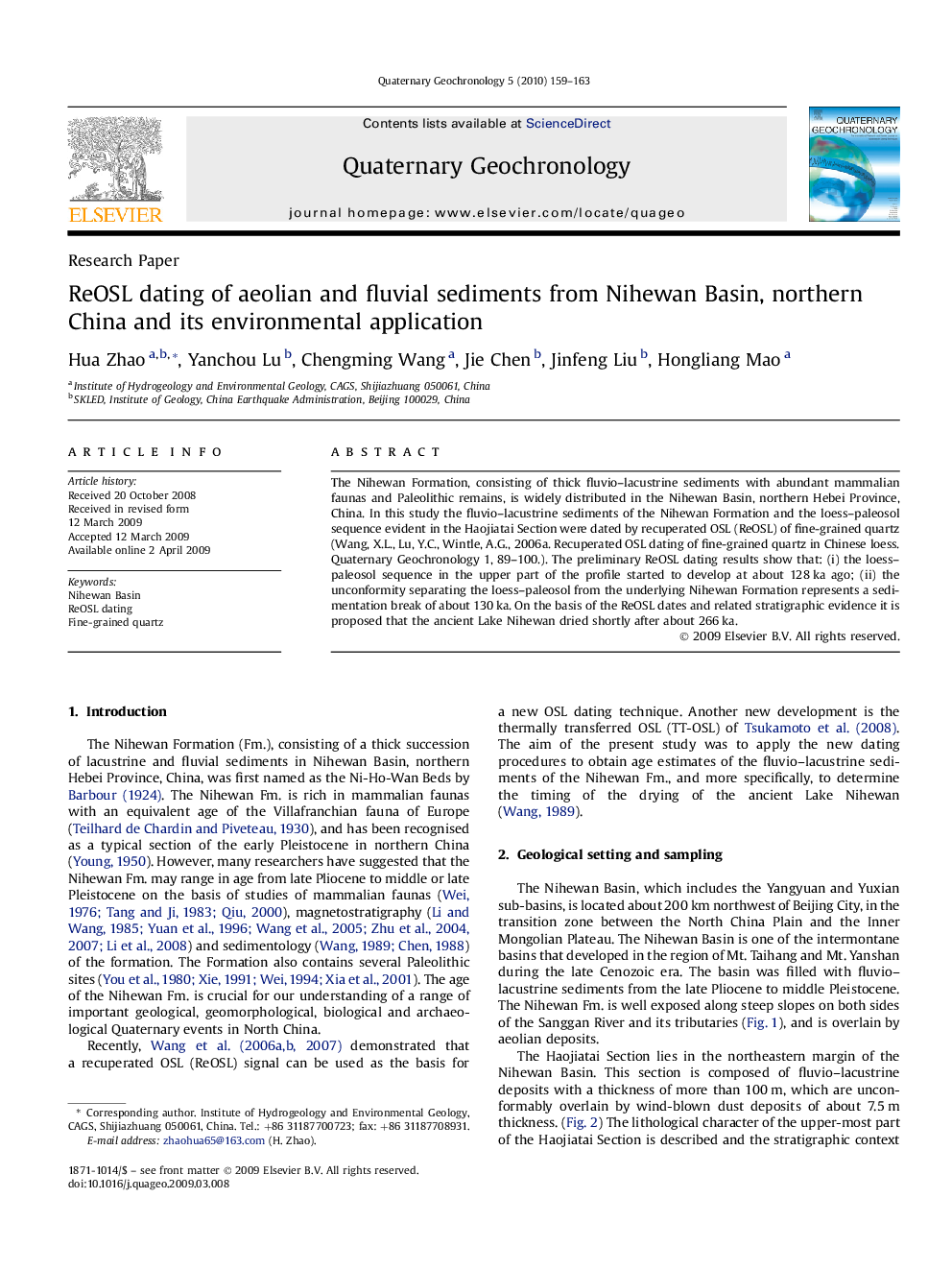| Article ID | Journal | Published Year | Pages | File Type |
|---|---|---|---|---|
| 4725506 | Quaternary Geochronology | 2010 | 5 Pages |
The Nihewan Formation, consisting of thick fluvio–lacustrine sediments with abundant mammalian faunas and Paleolithic remains, is widely distributed in the Nihewan Basin, northern Hebei Province, China. In this study the fluvio–lacustrine sediments of the Nihewan Formation and the loess–paleosol sequence evident in the Haojiatai Section were dated by recuperated OSL (ReOSL) of fine-grained quartz (Wang, X.L., Lu, Y.C., Wintle, A.G., 2006a. Recuperated OSL dating of fine-grained quartz in Chinese loess. Quaternary Geochronology 1, 89–100.). The preliminary ReOSL dating results show that: (i) the loess–paleosol sequence in the upper part of the profile started to develop at about 128 ka ago; (ii) the unconformity separating the loess–paleosol from the underlying Nihewan Formation represents a sedimentation break of about 130 ka. On the basis of the ReOSL dates and related stratigraphic evidence it is proposed that the ancient Lake Nihewan dried shortly after about 266 ka.
